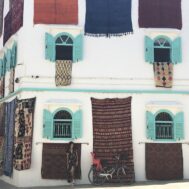From the standpoint of an ancient coin collector, it’s hard to know what to make of the hearing of the Cultural Property Affairs Committee (CPAC) on September 24, 2024. Even the proponents of the MOUs being discussed made virtually no mention at all of coins. Nonetheless, the consistent pattern of all-encompassing MOUs recommended by CPAC, and the failure of CPAC’s members to respond to speakers’ objections to their overbroad scope, is not reassuring.
Three MOUs were under consideration: a renewal of the now 37-year long MOU with El Salvador, and proposed new agreements with Lebanon and Mongolia. Much of the commentary was different for each one, though some common threads emerged. We will look at those first, then consider specifics of the three individual nations.
Several opponents of the MOUs pointed out how far they deviate from the language and intent of the Cultural Property Implementation Act (CPIA), the legislation that authorizes and guides these documents. They are extremely broad rather than being specific and targeted. They include items not referenced in the original legislation and not legally covered by it, and CPAC cannot support MOUs that violate the CPIA. On a related note, the CPIA requires consideration of “less drastic measures” that will achieve its goals; such measures exist (i.e., the United Kingdom’s highly successful Portable Antiquities Scheme), but have not been considered ahead of these proposed MOUs.
The MOU process itself was questioned, including the timeliness and accuracy of notices published in the Federal Register. Also questioned was the accuracy of emails from the State Department that were sent out pertaining to these MOUs. Withholding specific information on a source-country request and delaying its publication unfairly deprives museums, collectors, dealers and the general public of the opportunity to comment fully.

Palmyran funerary relief, Collection of Jawad Adra. Private collection in Nabu Museum, El Heri , Batroun, Lebanon.
Considerable doubt was cast on the work done by these governments themselves to protect their heritage. Evidence of this is required by the CPIA as a prerequisite for entering into these MOUs. Lebanon and El Salvador in particular are actively destroying their heritage sites. Even one of the supporters acknowledged that in Lebanon, the preservation infrastructure had collapsed, though he said that it was “almost certainly true” that both countries are now trying to protect their heritage. Yet the current Minister of Culture in Lebanon is a member of the political party formally affiliated with Hezbollah.
Noted also was the fact that each of these countries as their boundaries exist today were part of significantly larger empires in ancient times. This means that many items attributed to these empires can in no way be definitively determined to have been created within the nations’ current borders.
One point made in favor of the MOUs was that scholars and academics in these countries want to have increased interaction with colleagues around the world, and in the United States specifically. The U.S. is often the preferred choice for continuing their studies. The argument was made that the MOUs would promote this laudable objective – but nothing in the CPIA designates this objective as a rationale for such MOUs. Nor did any speaker supporting the MOUs explain how import restrictions would facilitate this goal.
Lebanon
Opponents focused heavily on current circumstances in the country, noting first and foremost that the government, with which the MOU would be signed, is controlled by the Hezbollah terrorist organization. Not only is very little being done at present to safeguard historical sites and cultural heritage, there is considerable concern that Hezbollah is funding its activities by the selling of looted and/or returned artifacts.
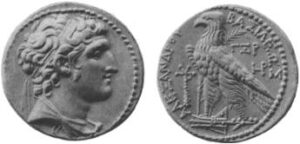
SELEUCID KINGDOM. Alexander I Balas (152/1-145 BC). Silver tetradrachm (14.31 gm). Tyre, SE 163 (150/49 BC). Diademed, draped bust of Alexander I right / BASILEW[S] ALEXANDROU, eagle standing left on prow, palm branch under far wing, Tyre monogram atop club in left field, date GXR above HP monogram in right field.
Regarding coins specifically, several examples were given of coins attributed to ancient city-states, such as the shekel of Tyre, that have been found outside Lebanese borders. In many cases, their widespread distribution, especially the large numbers found in Israel, makes it impossible to determine whether any individual coin was of Lebanese origin. Related to this, one MOU proponent noted that artifact from all over the Middle East are brought to Lebanon and sold there, further muddying the waters of determining the actual nation of origin of items emanating from the country
Mongolia
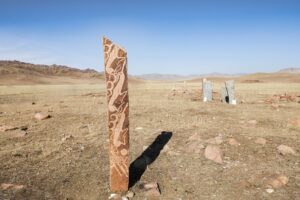
Ancient standing stones from steppe nomad cultures, February 2022, Author J Bayarmagnai, CCA-SA 4.0 International license.
MOU proponents stated that looting was a major issue in Mongolia, with one of them describing it as a recent phenomenon. There has recently been looting directed at permafrost burials of ancient nomadic peoples from the 3rd C BCE to early centuries CE, as archaeological excavations by foreign teams have alerted locals to the potential for finds in ancient tumuli. Yet little evidence was cited of the government actively protecting sites once archaeologists have left. One proponent acknowledged that the capacities of archeologists and historical preservationists was being seriously taxed. The fact that the unusual finds from such frozen burials have not come to the United States, as required for an MOU under the CPIA, went unmentioned. In fact, the most avid market for such materials and the one most accessible to Mongolian looters, is China.
Questions were raised about the types of items being found in Mongolia. When one MOU proponent listed examples of such items, she did not include coins, and coins were never referenced during proponent testimony. However, it was pointed out that except for 18th and 19th century sculptures of the Zanabazar school, made in Mongolia proper, many Tibetan religious objects were made in Inner Mongolia, which is part of China . The current U.S. MOU with China only extends up to the Tang period, excluding the majority of artifacts taken in Tibetans’ escape from invasion and destruction. These artifacts are now the most precious religious items for Tibetans in the diaspora and housed in U.S. museums with the support of the Dalai Lama. The prospect that such Tibetan items would be confused as Mongolian and returned either to Mongolia or China would be a disaster for Tibetans worldwide. This completely disconnects such items from the purpose of the CPIA.
El Salvador
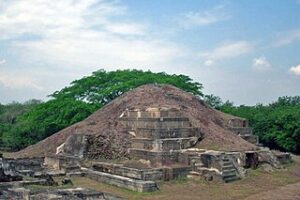
Main pyramid (San Andrés, El Salvador), photo from the book “Two Hundred Days in Latin America”, 16 April 2015, photo Victor Pinchuk, CCA-SA 4.0 International license.
The ancient civilizations that controlled what today is El Salvador did not mint coins, so this MOU renewal received scant attention from opponents, beyond the general points made regarding all three proposed documents. The failure of the El Salvadoran government to protect its own heritage and sites through the 37-year period of the MOU was noted; commercial development supported by the government has in fact destroyed important sites. One proponent stated that recent legislation had been introduced in support of cultural and historic protection, but also observed that it was not the role of the United States to police the situation in El Salvador.
While the most compelling case against these agreements was made in opposition to the MOU with Lebanon, it was made clear that none of these governments is living up to the CPIA requirement of taking strong protective measures to preserve their history and culture. While proponents cited certain steps being taken in this direction, none could definitively state that the requirement was truly being met. As one opponent noted, the U.S. needs to hold these governments accountable first, before developing formal agreements in support of them.

El Salvador 1892 20 pesos, first year of issue for gold coinage. National Numismatic Collection, National Museum of American History, public domain.
Returning to the issue of ancient coins, no testimony in favor of their inclusion was given during the hearing, though at least one written comment made some overstated claims about the rarity and value of Lebanese coins. Whether CPAC notices this, and takes it into consideration, remains to be seen.
Underlying all of this is the unfortunate situation of people who absolutely share an interest in ancient civilizations being pitted against each other by these MOUs. The Department of State seems to deviate further and further from the purpose and specific directives of the CPIA; in the process, they are achieving fewer and fewer of its objectives. This makes actions being taken by the Ancient Coin Collectors Guild and allied organizations to rein in the Department, to force it to abide by Congressional legislation, ever more critical.
Contributing author Keith Twitchell is the executive director of the Ancient Coin Collectors Guild. Twitchell has been an ancient coin collector and researcher for 25 years. He resides in New Orleans, where he has founded and directed a number of community-oriented nonprofits for the public benefit. Founded in 2004, the Ancient Coin Collectors Guild is comprised if collectors, dealers, educators and historians who share a passion of ancient history.
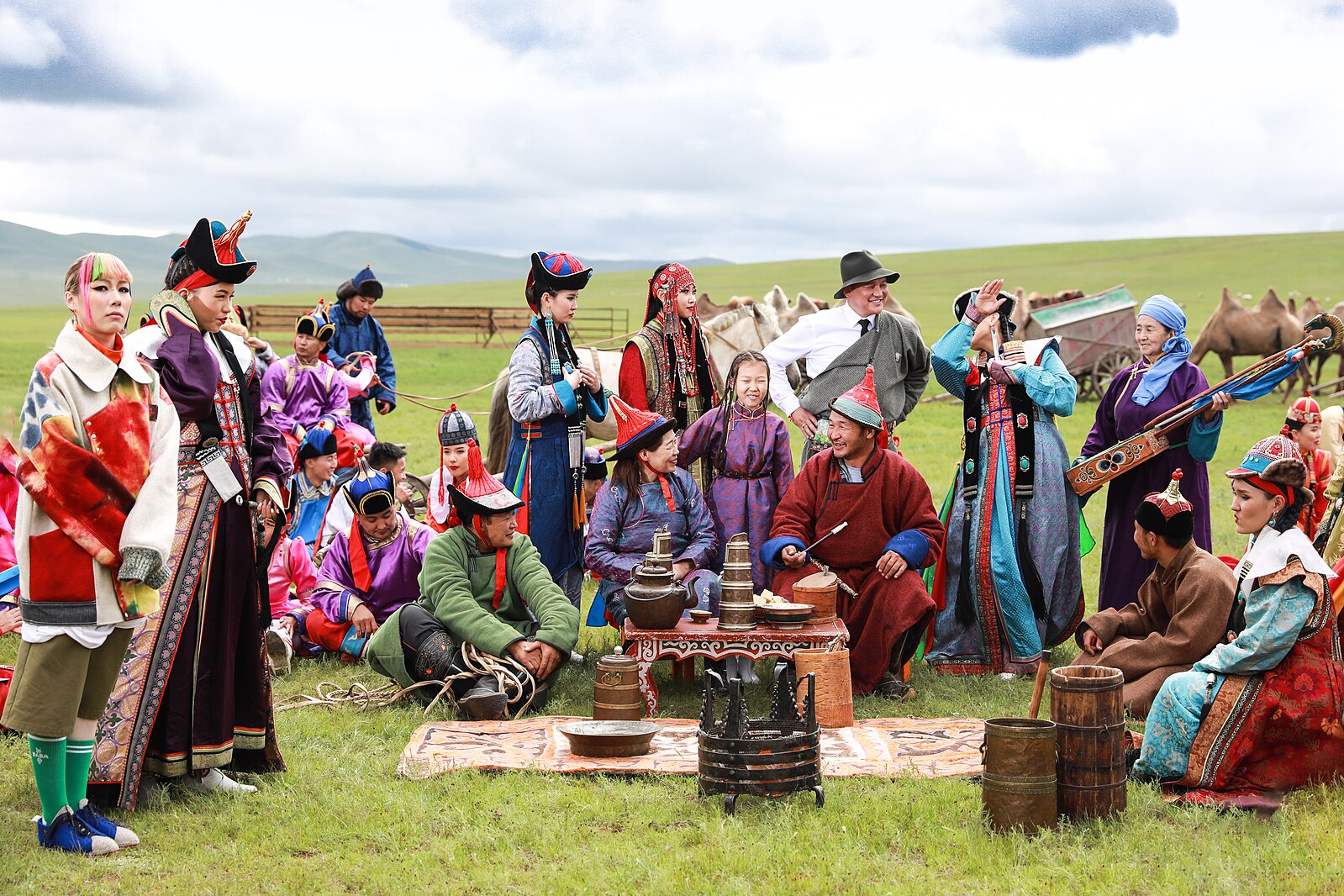 Naadam, Mongolian traditional festival, performed for visiting guests/tourists, February 2022,
Author J Bayarmagnai. CCA-SA 4.0 International license. Folk costumes and implements for household use are among the items for which import restrictions are sought.
Naadam, Mongolian traditional festival, performed for visiting guests/tourists, February 2022,
Author J Bayarmagnai. CCA-SA 4.0 International license. Folk costumes and implements for household use are among the items for which import restrictions are sought. 

